Wildfowling for beginners
An essential guide to getting started in this challenging sport
Win CENS ProFlex DX5 earplugs worth £1,149 – enter here
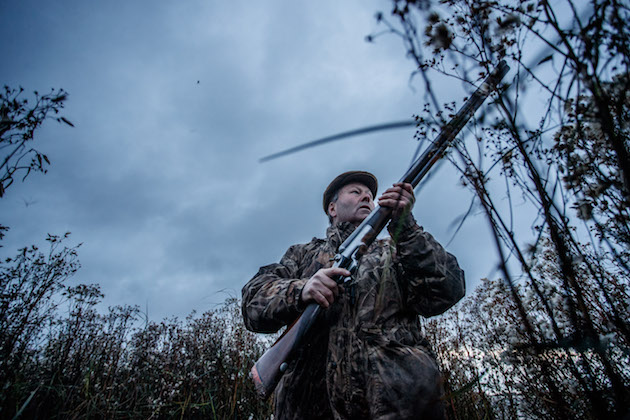 Dave
Usd 20 nov 19 wildfowling
Dave
Usd 20 nov 19 wildfowling
You might not have heard of him but if you’re a member of BASC — and by my reckoning you ought to be — you owe a great deal to a railway engineer called Stanley Duncan.
In 1907 Old Man Duncan, as he came to be known, moved to Hull from Newcastle to work for LNER. It is said that one autumn day, while holed up in a black hut on the northern bank of the Humber, Duncan realised he was under attack.
It is tempting to look back at the past as a foreign country, where fox hunting and wildfowling were seen as integral and valued parts of British life, but in reality it wasn’t so.
Duncan feared for recreational wildfowling on two counts. He noted there was a growing number of extremists set on a wild bird shooting ban and he worried that drainage, in an effort to bolster the nation’s agricultural output, was ruining vital fowling habitat.
In 1908, after canvassing opinions from other sportsman including that legendary gentleman of the marsh, Sir Ralph Payne-Gellway, Duncan called a meeting at the hut.
Upon agreeing that steps needed to be taken to safeguard the sport, the Wildfowlers’ Association of Great Britain and Ireland (WAGBI) was born.
The long-anticipated Protection of Birds Act came in 1954. Thanks to WAGBI’s intervention, it was a much more reasonable piece of legislation than many had feared.
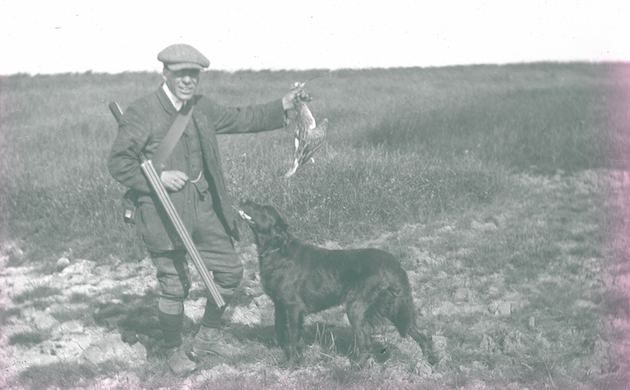
Stanley Duncan with a shot curlew, which were on the sporting quarry list until 1981
Twenty-seven years after Duncan’s death, the world was changing fast and the likes of pheasant and partridge shooting were also firmly in the line of anti-fieldsports fire. Accordingly, at the 1981 AGM, it was decided that the organisation should be rebranded as the British Association for Shooting and Conservation — BASC — to spearhead the fight for our sport as a whole.
By the time I was on to my second pint in a little pub outside Hull, darkness was closing in. On the table in front me were four copies of Shooting Times from the mid-1930s, all open at Duncan’s column: Jottings for Wildfowlers. In a late February issue, I came upon a stark passage about the motivation to found WAGBI: “Sportsmen in general, besides the wildfowler, did not realise that his sport was threatened with prohibition and does not even yet.” I couldn’t help wondering if Duncan would feel that his point still stands today.
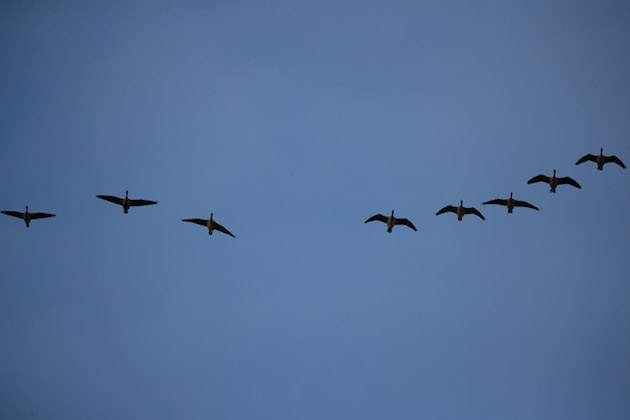
The finest sight a wildfowler can see
Then, hauling me from my gloom, the night sky burst into life. Skein upon of skein of pinkfeet were on the wing — ‘heaven’s hounds’ as another great contributor, BB, called them — heading back to their roosts.
The following morning, at the back of five, I drove out of town to meet Paul and Dave Upton, two stalwarts of the Hull & East Riding Wildfowlers who have been fowling in the footsteps of Old Man Duncan since they were boys.
In another column, Duncan refers to his sport as ‘a secret one’ and so it is today. I can’t divulge exactly where it was that we left the beaten track and set off through brackish marsh towards the foreshore, but the distant glow of light from the Humber bridge was just visible in the blackness. After half an hour or so of tripping and stumbling, the darkness in the east started to fade to grey.
Passages of Duncan’s I’d stopped at when making my way through our archives on slow days in the office came to me. “Features are presented in wildfowling that no other forms of shooting can boast,” he wrote. “Some of them either encouraging, aspiring and elevating in atmosphere or sad and repressive in spirit. With the season come the dawns and sunsets that make for all there is and can be. We see the beginning of each new day and its close.”
That particular day seemed slow dawning but, when it did, I found myself in a glorious landscape with the dappled Humber stretching far out in front and miles of flat East Riding farmland out behind.
Dave and I hunkered down in a little inlet, shared a flask of tea and waited. Just inland a marsh harrier was hunting mice and on the water, a large boat was thundering up the channel. But above the engine noise came another sound. Restless pinkfeet on the mudflats were about to take to the sky.
I had been told by a friend that if there is anyone in Yorkshire who can get you under geese, it’s the Upton brothers and they were right. For the next hour and a half, pinkfeet poured over us but the wind was not on our side and they were well out of range. As we drained the dregs of the tea, however, our fortunes changed and a lower skein appeared on the horizon.
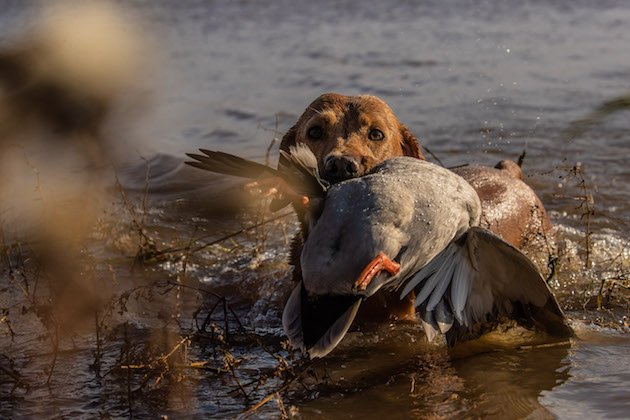
Patrick’s mallard drake that was later gifted to a window cleaner
“We’ll leave the first ones and take the second,” said Dave in a hushed tone. Just as I was getting ready to spring up, the deep boom of an old hammergun sounded behind us. Turning, I saw a goose tumbling towards the ground. Paul had hit the mark and, in doing so, sent the skein heading towards us, flaring out into the estuary.
By the time the pinkfeet stopped coming, the tide had come right in, cutting off our way out. So we stood and watched a seal. As Dave was telling me a story about a lad in the club whose dog was attacked by one as it went to retrieve a bird, two mallard appeared, heading straight for us over the rushes.
On spotting me, they swung out to the right and I fired at the drake that fell, instantly, among the waves. After another half an hour, the tide was starting to draw back over the mud, allowing us to wade towards dry land.
Over breakfast, the brothers asked me if I’d like to see the grave. We slipped under an old fence and I followed until we stood in front of Stanley Duncan’s final resting place. A headstone reads: “Founder of the Wildfowling Association of Great Britain and Northern Ireland” then underneath “not for one but for all”.
“That was sort of his motto,” Dave reflected. “He used it in his book.” It is frequently seen on graves in Latin — Non sibi sed omnibus — but for Duncan it was about geese and access to fowling. These, he thought, should be a right for everyone, not merely for a privileged few.
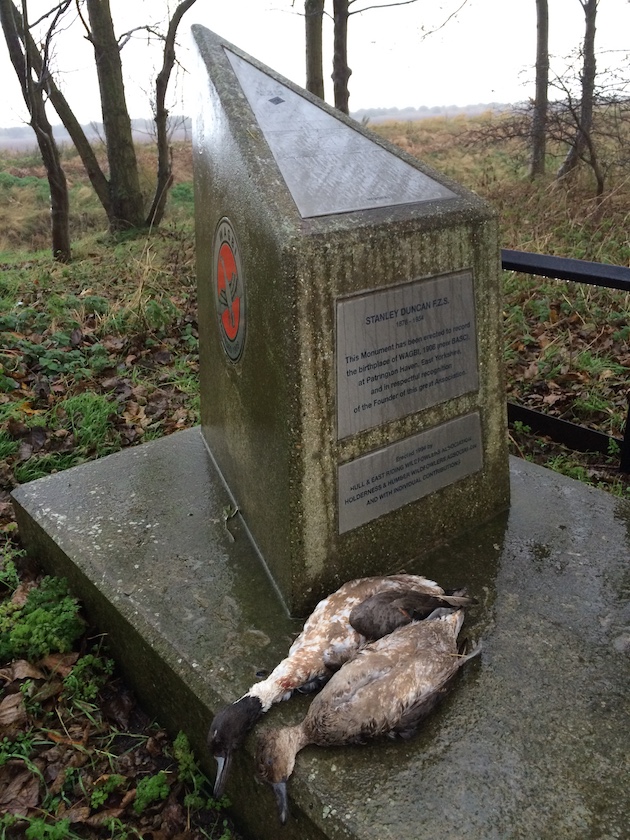
Stanley Duncan memorial and a pair of pintail shot nearby. Stanley Duncan was the founder of WAGBI (now BASC)
Later that evening, as we gathered at another bit of marsh for a return flight, Dave explained that the famous fowler had originally been buried in a pauper’s grave. He managed to find out where it was “about 10 years ago and, with donations from a few local wildfowlers and other clubs, they paid to have it marked”.
An essential guide to getting started in this challenging sport
Wildfowling kit has benefitted greatly from advances in materials technology in recent years and so we’ve compiled this guide to…
With darkness falling fast and rooks squalling across the sky, it was time to head across the train tracks to where the fields fall away to scrubby saltings. “Do you think,” I asked Ken Arkley, secretary of the Hull & East Riding, who was standing at my side, “that if those who dislike fieldsports were to spend a day out on the marsh, they would rethink their position?”
He replied: “I’d like to think so. But we’ve been saying to those who regulate us, like Natural England, for years that it would be a good thing for them to come out and see what we do so they have a better understanding of what it is they are actually regulating, but they’ve yet to come.”
Then he grew a little more exasperated: “The irony of the whole thing is that dog walkers and members of the public who use this foreshore don’t ever put anything back.
Wildfowlers are constantly putting things back. We spend our money in order to fund conservation projects and we are doing it because we know that if we don’t nobody else will.”
Stanley Duncan’s words about wildfowling as a sport that evokes a myriad of sometimes conflicting emotions are perhaps even truer today than they were then. Standing on the Humber estuary next to Ken with pinkfeet in the sky, I felt both hugely proud of wildfowlers down the decades and deeply depressed that they aren’t celebrated as they ought to be.
Get the latest news delivered direct to your door
Discover the ultimate companion for field sports enthusiasts with Shooting Times & Country Magazine, the UK’s leading weekly publication that has been at the forefront of shooting culture since 1882. Subscribers gain access to expert tips, comprehensive gear reviews, seasonal advice and a vibrant community of like-minded shooters.
Save on shop price when you subscribe with weekly issues featuring in-depth articles on gundog training, exclusive member offers and access to the digital back issue library. A Shooting Times & Country subscription is more than a magazine, don’t just read about the countryside; immerse yourself in its most authoritative and engaging publication.

